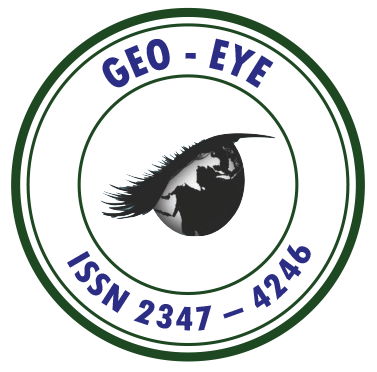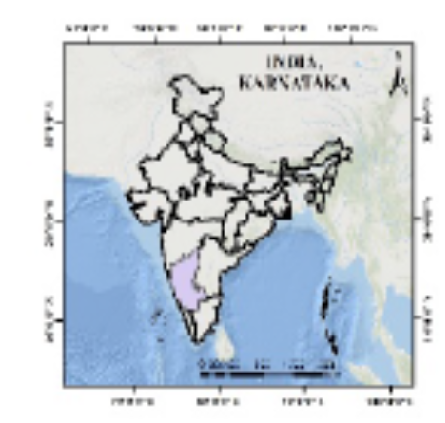
Geo-Eye
Department of Geography & GIS

Department of Geography & GIS

Geo-Eye
Year: 2024, Volume: 13, Issue: 1, Pages: 9-14
Original Article
M Sasi1∗, Sawant Sushant Anil2
1Research Scholar, School of Life Science, JSS Academy of Higher Education and Research, Mysuru, Bangalore
2Assistant Professor/Course Coordinator, School of Life Science, JSS Academy of Higher Education and Research, Mysuru, Karnataka
∗Corresponding author
Email: [email protected]
Received Date:27 February 2024, Accepted Date:27 February 2024
The sustainability of natural resources and biological processes are greatly influenced by landscape dynamics. Planning and responsible resource management are made easier with an understanding of terrain dynamics 1 . Intense urbanization in Indian cities has resulted in extraordinary changes to the country's land use patterns, which have drastically altered the city's thermal characteristics due to rising surface temperatures, the presence or absence of greenery, and water bodies 2 . Land surface temperature (LST) is a critical input for climate models and is studied in many domains, such as urban land use and cover, geophysical and biophysical research, and studies of global climate change. LST is a critical input for climate models and is studied in many domains, such as urban land use and cover, geophysical and biophysical research, and studies of global climate change 3 . The variability of retrieved land surface temperatures (LSTs) with respect to Normalized Difference Vegetation Index (NDVI) values for different land use/land cover (LU/LC) types determined from the Landsat 8 visible and NIR channels has been investigated using the LANDSAT 8 - Operational Line Imager & Thermal Infrared Sensor (OLI & TIRS) satellite data 3 . Bantval, Baltangvadi, Puttur, and Sulya in the Dakshina Kannada district have been considered for LST assessment in the current study taluk. According to estimates, the lowest LST is 53.70C and the maximum is 78.670C.
Keywords: Land Surface Temperature (LST), LULC, NDVI, Landsat 8 (OLI & TIRS)
© 2024 Sasi & Anil. This is an open-access article distributed under the terms of the Creative Commons Attribution License, which permits unrestricted use, distribution, and reproduction in any medium, provided the original author and source are credited.
Subscribe now for latest articles and news.